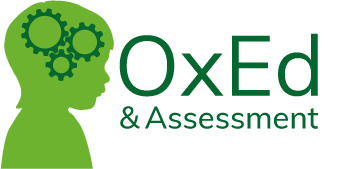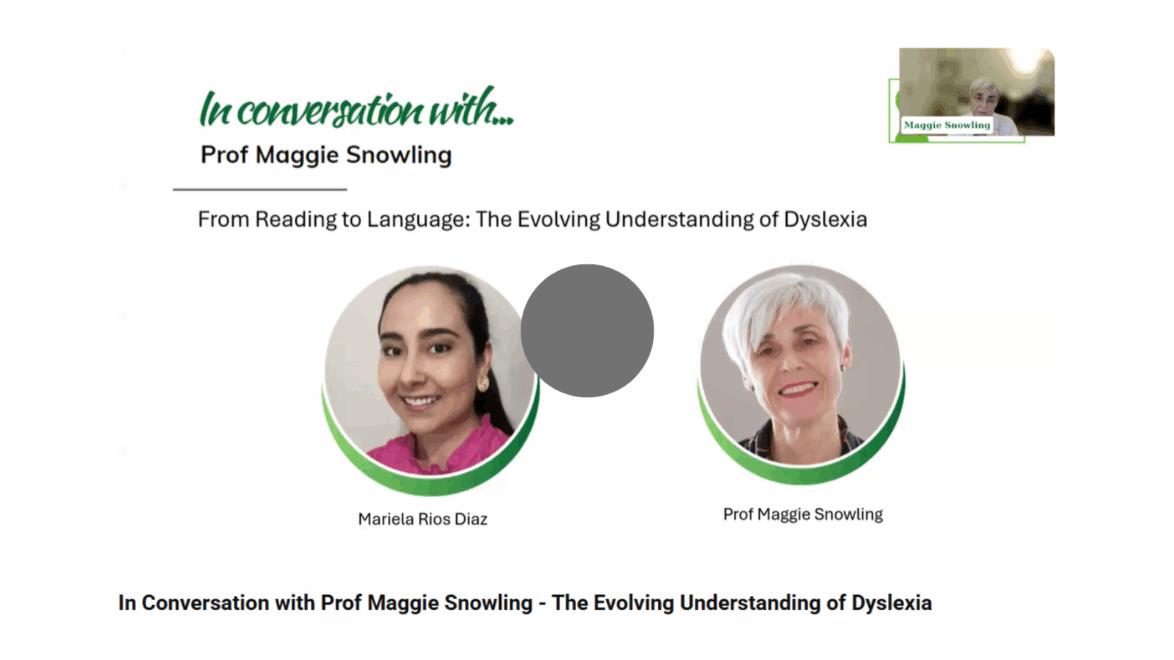Why Oral Language is Fundamental in Understanding Dyslexia
Dr Maggie Snowling, renowned psychologist and the world’s most cited academic in the field of dyslexia, shares her expertise on how the meaning of dyslexia has evolved.
What is Dyslexia?
Dyslexia is a specific difficulty in learning to read and write fluently. Dyslexia primarily affects decoding skills (the ability to translate written symbols into sounds) rather than reading comprehension. However, comprehension can be impacted as a result of dyslexia.
How Our Understanding of Dyslexia Has Evolved
Historically, dyslexia was defined by the World Federation of Neurology as ‘a difficulty learning to read in the face of good intelligence.’ This was referred to as the discrepancy definition, as it suggested dyslexia was a result of the discrepancy between a child’s IQ and their reading ability. This model suggested that students with average or above-average intelligence who struggled with reading were dyslexic.
However, this view has evolved significantly with research now pointing to phonological deficits, such as difficulties in processing the sound structure of language, as the core issue in dyslexia. These challenges can exist regardless of a child’s IQ, shifting the focus from intelligence to specific language processing skills.
A pivotal shift occurred in dyslexia research with Hollis Scarborough publishing the very first study of children at family risk of dyslexia. Studies revealed that students with a family history of dyslexia often exhibited broader language difficulties in their pre-school years, not just phonological problems. This was further supported by research into Developmental Language Disorder (DLD), which showed that persistent language impairments significantly affect literacy development.
The Critical Role of Early Oral Language
Oral language development between the ages of three and six is crucial. Students who struggle with language during this period are at a higher risk of developing dyslexia.
To better support students at risk, Dr Snowling advocates for several practical strategies:
- Early surveillance and screening
Schools should implement systems to assess students’ readiness for learning, focusing on both phonics and oral language. Screening tools can help identify vulnerable students early, especially in disadvantaged communities.
- Targeted early intervention
Improving language skills around the time of school entry can significantly reduce the risk of dyslexia. Interventions should be tailored to individual needs and begin as early as possible.
- Identifying vulnerable groups
Students from low socio-economic backgrounds, English Language Learners (ELL), and those with developmental conditions such DLD are particularly at risk. A response to intervention (RTI) approach is recommended to monitor progress and adjust support accordingly.
How to Transform Classrooms Into Language-Rich Environments
The language needs of students in a classroom can vary widely. Dr Snowling outlines several ways language development can be supported within the classroom:
To better support students at risk, Dr Snowling advocates for several practical strategies:
- Teacher training
Training should emphasize language and reading instruction so that teachers can create language-rich environments and identify students who are having difficulties.
- Teacher awareness
Teachers should be mindful of their own language use, pacing, and non-verbal cues.
- Active engagement
Teachers should engage directly with students – listening, making eye contact, and helping them rephrase sentences.
- Vocabulary instruction
Vocabulary should be taught actively and in context.
- Observational skills
Teachers should be alert to students who are not speaking or listening and investigate the underlying causes.
How to Monitor and Support Oral Language
Intervention is essential. This involves providing mainstream classroom support, small group interventions, and ongoing monitoring to ensure students are progressing.
Even in phonics-based reading instruction, language plays a foundational role. Early language skills predict phonological awareness, and vocabulary knowledge is essential for decoding irregular words and blending sounds.
If a child struggles with phonics, it’s important to identify the root cause – whether it’s a language issue, attention difficulty, or something else. Phonics should be complemented with language-rich activities and reading from books. Importantly, students should not be encouraged to guess words, as this can hinder decoding skills.
Recommended Screening Tools for Elementary Schools
Dr Snowling recommends comprehensive screening assessments that include:
Language screening tools
- LanguageScreen assesses receptive and expressive vocabulary, sentence repetition, and listening comprehension.
Reading screening tools
The below tools assess phonemic awareness and letter knowledge:
Spelling
Group spelling tests can reveal phonological processing issues through error patterns.
Looking Beyond Dyslexia
We know a lot about dyslexia – its nature, causes and robust interventions. We also know that dyslexia, and all neurodevelopmental disorders, tend to co-occur. For example, many students with dyslexia will have an attention problem, a language problem or dyscalculia.
Dr Snowling emphasizes that we must therefore have an enlightened approach and carefully consider the overlap between dyslexia and language disorder. By recognizing the signs early and creating supportive, language-rich environments, we can help every child reach their full literacy potential.


